Museum
History - Cultural complex
Museum
History - Cultural complex
History
Es Baluard Museu d'Art Contemporani de Palma is located on the perimeter of the bastion of Sant Pere, which forms part of the Renaissance walled enclosure that surrounded the city of Palma until the early 20th century.
The construction of the defensive bastion dates back to the last quarter of the 16th century. In this period, the ancient medieval walls were reinforced with the construction of new walls designed by the Italian engineer Giacomo Palearo Fratín. The bastion of Sant Pere stands out for its large dimensions and strategic location, which is why it was the place chosen to install one of the most prestigious artillery schools in Europe.
The enclosure has undergone different modifications over the centuries. In 1646, during the mandate of Vicenç Mut, the height of the bastion of Santa Catalina was changed to place it on a level with those of Moranta and Sitjar and communicate them via the city wall. During the 18th century, the construction would permanently acquire its present form.
In 1952, after over three hundred years, the bastion of Sant Pere ceased to be used for military purposes and a few years later passed into private ownership. The new owners planned to construct buildings throughout the whole area and as a result, in 1963 they tried to destroy the wall with lime bombs but the citizens reacted, and the bulwark was declared a historical and artistic ensemble and its immediate reconstruction was planned in 1965.
At the end of the nineteen-eighties, the land was classified as for public use and its expropriation began, and it was left abandoned until 1997, when that same land was ceded by Palma City Council for the construction of the museum, under the name of Es Baluard Museu d’Art Modern i Contemporani de Palma, which was inaugurated on 30th January 2004.
Description of spaces
The location and configuration of Es Baluard Museu takes one on a journey through the history of the Balearic Islands and the evolution of the city of Palma. The neighbourhood of Sant Pere, where the museum stands, has its origin in the Islamic era. This was probably a free space, or an area of gardens and funeral spaces that would extend to the outskirts of the former Almudaina fortress, beyond the Torrent de la Riera storm drain.
We know that the medieval wall from the Muslim era was constructed on the basis of a project from the late 9th century, and had some highly singular constructive characteristics. Its towers were situated at an approximate distance of 35 metres from one another (one example of them is The Tower, one of the spaces in the cultural complex) and near the gates in the wall there were some free spaces dedicated to markets and necropolises. This new enclosure covered an area much larger than the Roman one (the only wall the city had had until then) and in spite of being replaced later by the Renaissance walls, the city did not break out of these limits until well into the 20th century. In Muslim times the neighbourhood of Puig de Sant Pere was the area of the city where the gateway known as Bab al-Jadid was located, the exit from the city towards Porto Pi. Under Arab rule this area of the city was a sparsely-inhabited area that was not built up until after the conquest of Mallorca in 1229.
In the late 20th century, a series of excavation and restoration tasks were carried out with the aim of rehabilitating and reconditioning the neighbourhood of Sant Pere, and in particular the street of Calle de la Pólvora.
Museum
Converted, in different phases since 2004, into the largest space for the conservation and dissemination of contemporary art in the Balearic Islands, the different spaces in the museum have gradually organically acquired sense and function, in accordance with its heritage function and the needs of publics.
The main building was designed in 2003 by Lluís García-Ruiz, Jaume García-Ruiz, Vicente Tomás and Ángel Sánchez Cantalejo. It has a total surface area of 5,027 m², of which 2,500 are purposed for exhibition spaces. It is divided into three storeys that connect to the outside, with the walls and to each other via ramps, skylights and large interior balconies, in pursuit of the idea of an interior street.
Defined by simple, clean lines, the museum building is entirely respectful of the heritage and historical environment that surrounds and accommodates it; it integrates perfectly into the profile of the Renaissance bastion. The dialogue between the contemporary architecture of the new building and the ancient wall is present at all times and is constant, and one realises this as one moves through the different spaces in the museum. The project seeks to integrate modern construction and respect the ancient heritage of the walls, and at the same time be a differentiating element. Which is why materials like concrete and glass were used, allowing one to perfectly distinguish the two types of construction.
The external spaces are conceived as places for exhibiting and strolling, tracing out a route along the perimeter of the wall. The large water cistern is also kept as an exhibition space, and is also the venue for diverse events depending on the museum’s schedule.
If you're interested in renting our spaces, Es Baluard Museu open its doors to those companies and institutions sensible to our society's interest towards art. By renting our spaces, you'll be able to enjoy the museum exhibitions and facilities.


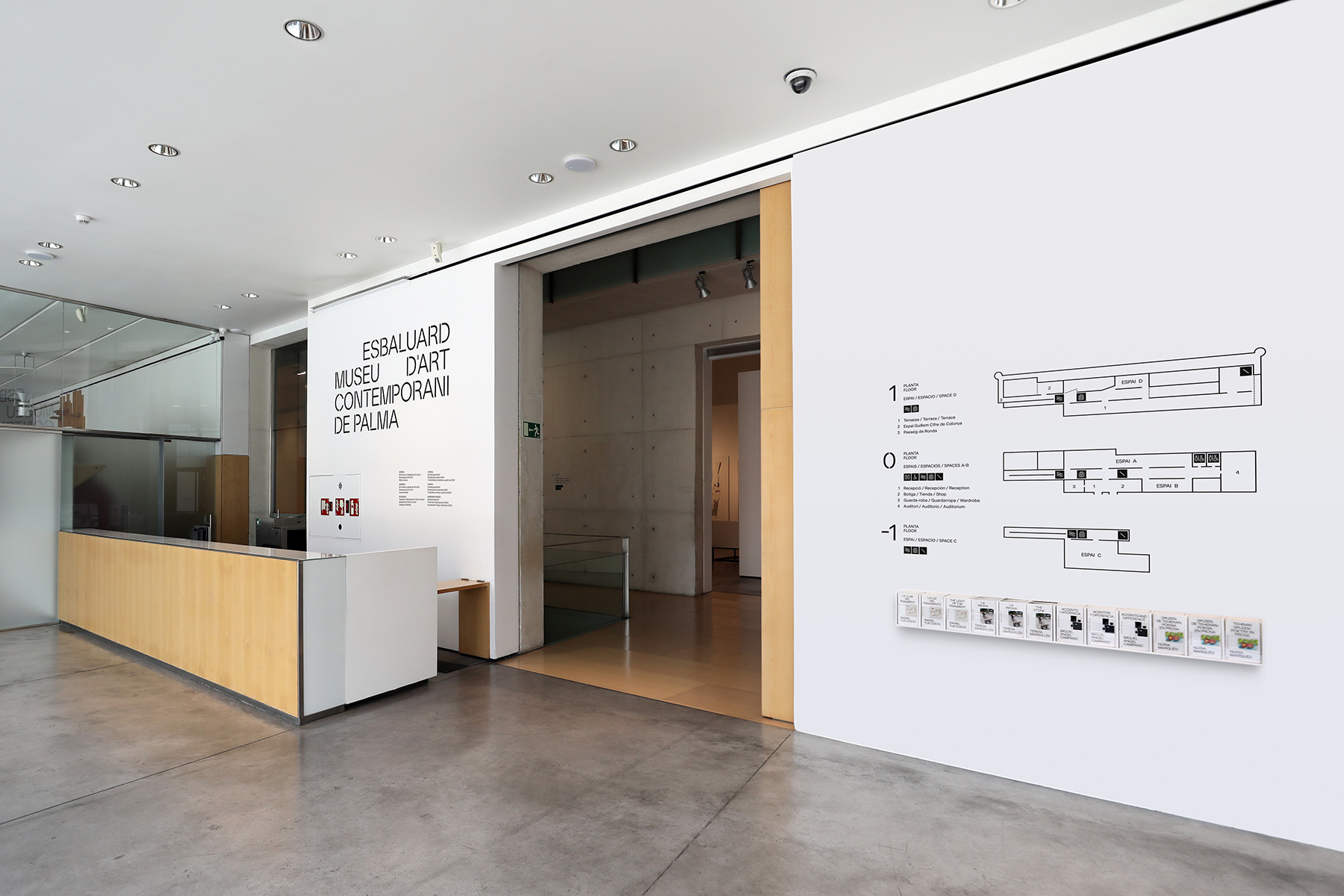
Central courtyard
Conceived as a living space for contemporary culture actions, leisure, events or walks, tracing out a route along the perimeter of the wall, the terraces and patios.
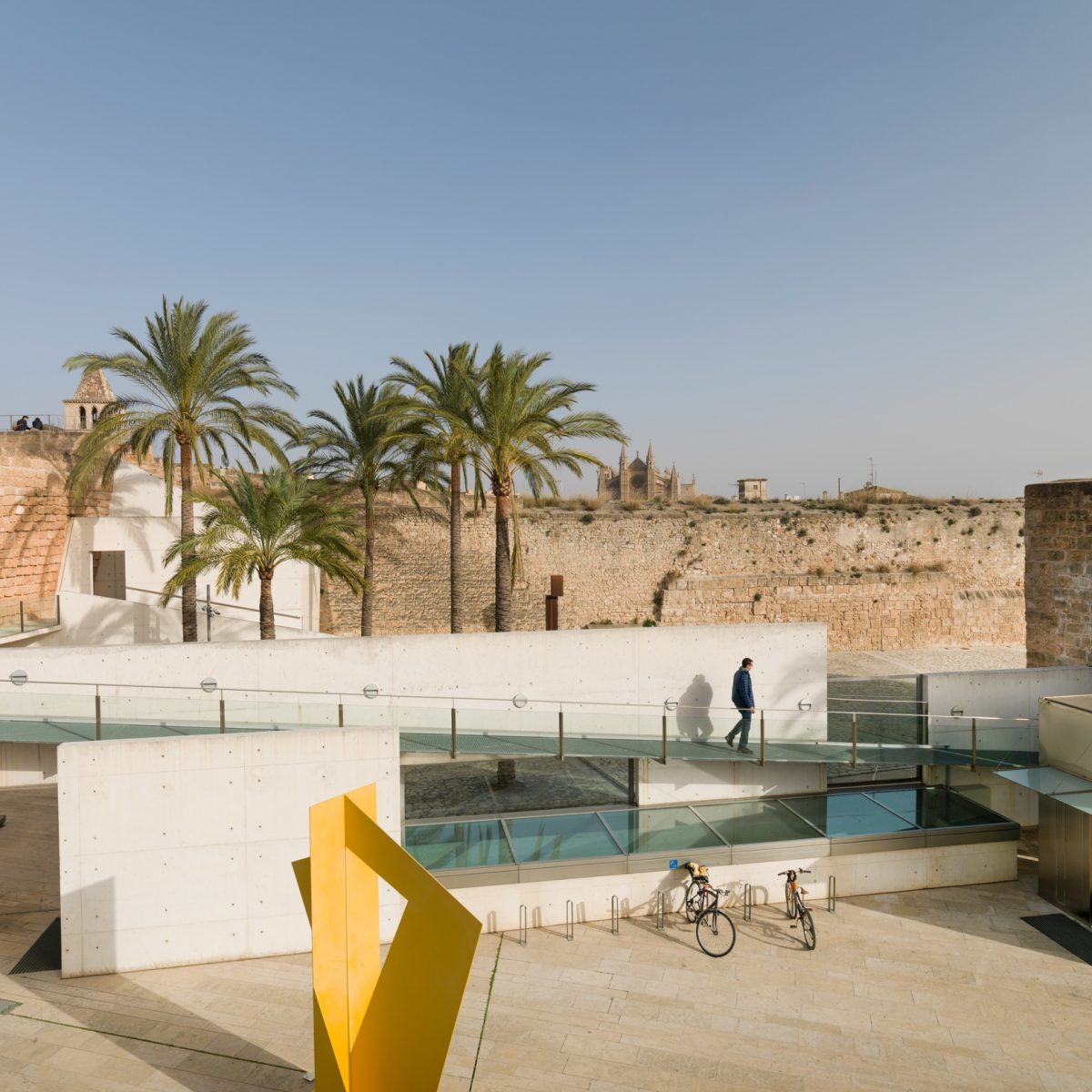
Aljub
The Aljub is a former freshwater cistern the construction of which was completed during the 1640s. It has a classical-type rectangular plan measuring 353 m², roof with a low cannon vault and openings for ventilation. Thanks to its restoration, one can appreciate the different construction techniques applied to its walls, one of which is the extremely ancient ‘fishbone’ technique.
We know that the freshwater that it stored supplied the whole of the Puig de Sant Pere neighbourhood and the boats that came to the port. This water came from the fountain of La Vila, near Esporles; it entered the city by the gate of Santa Margalida and reached the cistern by means of an aqueduct-channel.
When the bulwark fell into disuse it was turned into a rubbish tip. But it was rediscovered when the museum was constructed, and the decision was made to recover it, incorporating it into the Es Baluard Museu project.
Since its inauguration, it has been used for multiple purposes, housing an exhibition programme of international contemporary artists, interdisciplinary activities or as a multi-purpose space that can be hired due to its large dimensions and splendid acoustics.

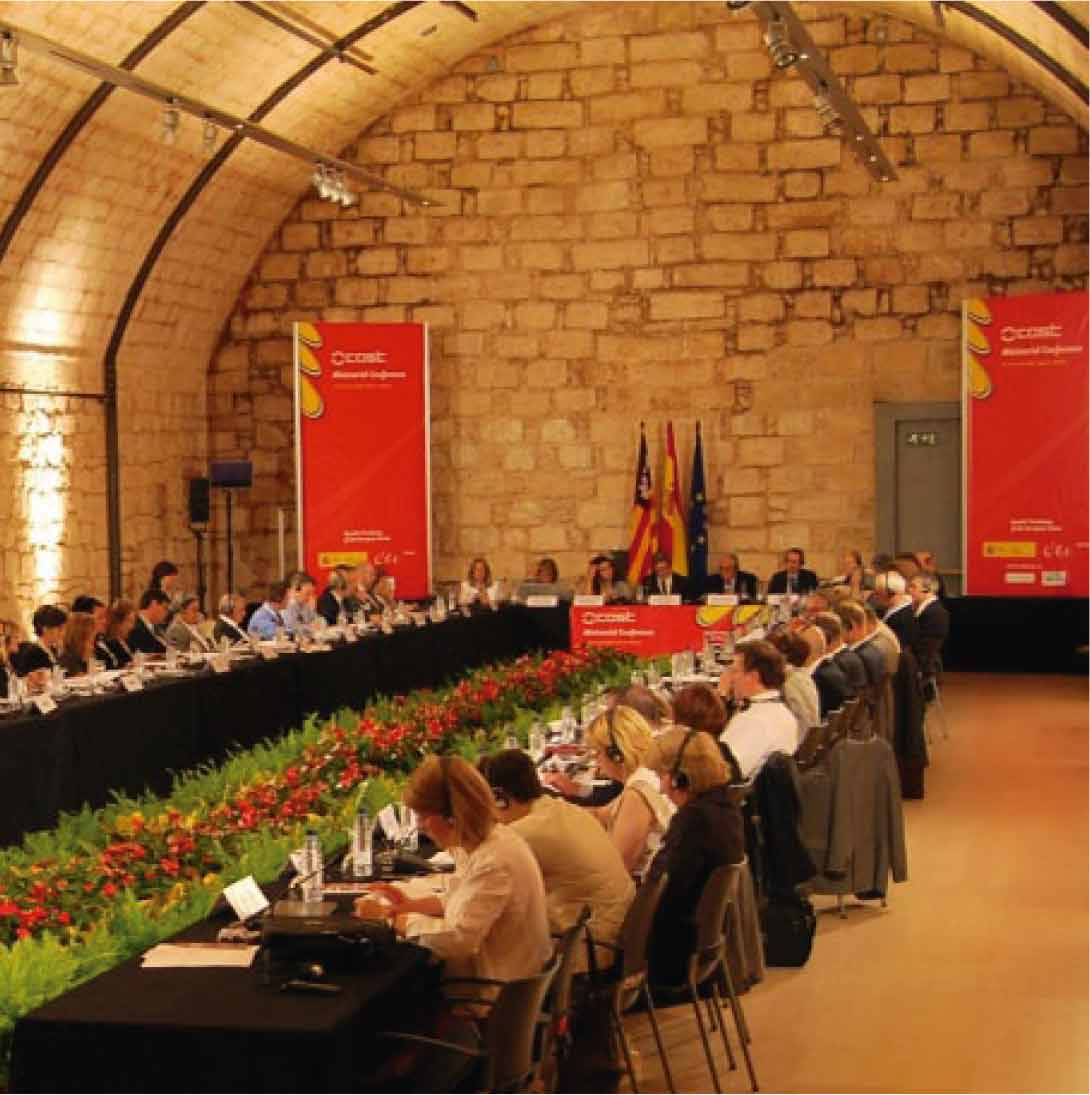

Viewer
Open outdoor space accessible to visitors affording incomparable views of Mallorca Cathedral, the Paseo Marítimo and the old Puig de Sant Pere neighbourhood.
Both this terrace and the one inside the museum are singular strategic points that allow one to view the phenomenon of the "Winter Solstice". This natural phenomenon occurs when the sunlight passes through the central nave of the cathedral and projects onto the rose window of the main façade, turning it into a gigantic kaleidoscope. It takes place between 18th and 24th December, although the 21st is the most important day.
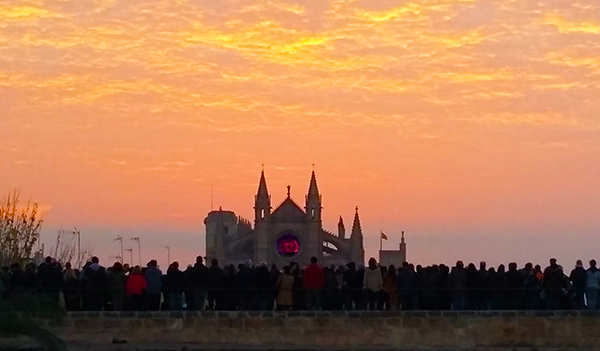
Terrace
Located between the outer city walls and the stretch of inner wall. This terrace runs alongside one of the museum’s lateral façades, above the old Aljub (water cistern), and ends in a splendid balcony overlooking the quay and the Bay of Palma, presiding over the cathedral and Bellver Castle, which are areas for public use.
The terrace’s privileged location over the Bay of Palma and size make it an excellent place in which to hold all kinds of events in the open air. The area available for holding events is located between the inner wall, where the museum is situated, and the wall that borders on Palma’s seafront promenade, the Paseo Marítimo.
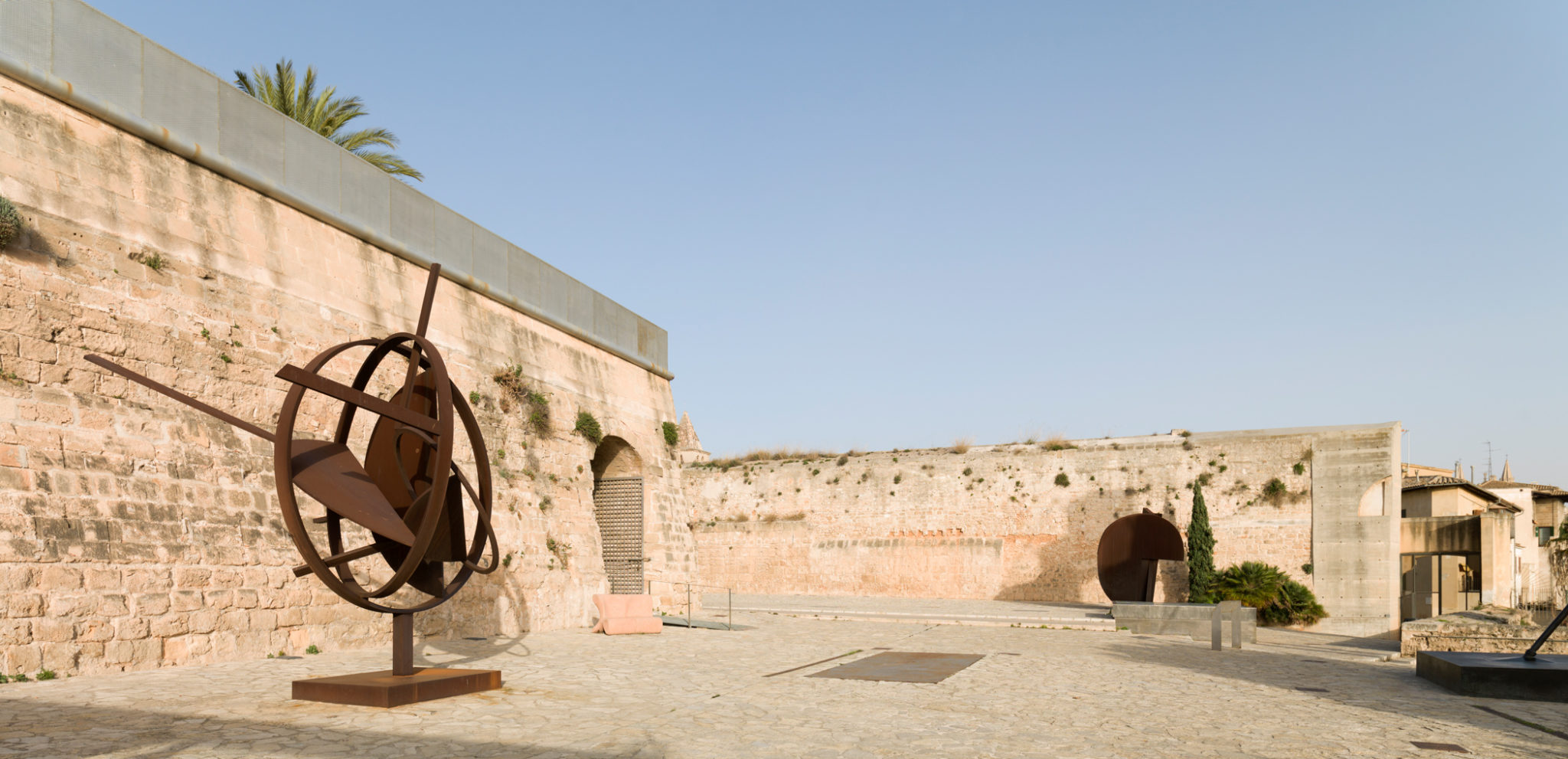
Espai Educatiu Guillem Cifre de Colonya
The Espai Educatiu Guillem Cifre de Colonya is taking shape as a new museum space in April of 2015, thanks to the collaboration of the Fundació Guillem Cifre de Colonya, among others.
A space for the use of the Education and Public Programmes Department which, consistent with its ultimate purpose, is gestated on the basis of a training process in which 10 young architects from all over the country take part, directed by Andrés Jaque and Nerea Calvillo and with the collaboration of the Col·legi Oficial d'Arquitectes de les llles Balears (COAIB- Architects' Association of the Balearic lslands) and Joana Canet.
The project, conceived as a workshop that combined theory and practice, is based on ideas for participative processes and sustainable construction solutions.
Today, the Espai Educatiu Guillem Cifre de Colonya is a poly-functional, practicable space of transit designed for frequent use; an organic installation that permits usage for exhibitions, participative interaction and processes; an autonomous space used for diverse audiences and activities: workshops for families, schools, meetings, a space for debate and repose.


